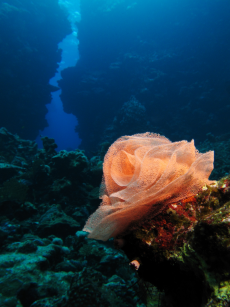
The name ‘sea slug’ refers to many different species from within the taxonomic class Gastropoda in the Mollusca phylum, which includes all slugs and snails from land and sea. When people think of sea slugs they picture brightly coloured creatures with odd patterns. For this reason sea cucumbers are sometimes called sea slugs too, but they are in the Echinoderm phylum along with star fish and sea urchins.
The sea slugs most often encountered by scuba divers come from the Nudibranch group, which are amazingly striking and colourful. The name Nudibranch means naked gills, referring to their lack of shell. Nudibranchs can be found all over the world, though they are found in the greatest numbers and with the highest diversity in shallow, warm reefs. These sea slugs can be as small as 4mm long or as large as 60cm, and can have very different appearances. Some are covered in strange, tube-like horns called cerata, which increase the nudibranchs surface area and helps it to respire. They have tentacles on their heads which can detect touch, taste and smell, and ‘ears’ called Rhinophores which are taste and smell receptors. Ironically, nudibranchs have very poor eyesight, barely able to distinguish between light and dark, and so will never see their own beautiful colours!

As they don’t have a shell, Nudibranchs rely on other methods of defense. Many of these sea slugs feed on very toxic animals like jellyfish and poisonous sea sponges and then separate their nematocysts, or stinging cells, when digesting. They can then incorporate these cells into their own bodies, and even concentrate them to make them even more deadly. For example, Glaucus atlanticus or the Blue Dragon sea slug (pictured), feeds on the Portuguese man o’ war, whose venom can even kill humans.
Another group which has earned the name sea slug are the Sacoglossa, which means ‘sap-sucking’. They are so called because, in a quite similar mechanism to the way their nudibranch cousins absorb toxic cells, they are able to take living chloroplasts from the algae they eat and incorporate these into their own bodies. This means they can feed off the products of photosynthesis, in a process which otherwise has only been observed in single-celled organisms.
Nudibranchs are hermaphroditic, which means they are both male and female at once. Their sexual openings are found on the sides of their body. When they mate, nudibranchs sit side-by-side and swap sex cells, and then both become pregnant. They lay their eggs in long gelatinous spirals which look like beautiful ribbons. Nudibranchs never live longer than a year.
Images: wikipedia.

0 Comment:
Be the first one to comment on this article.